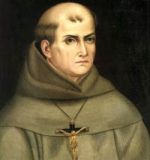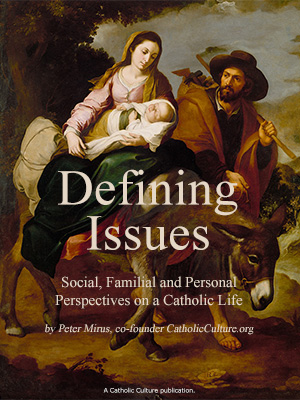Memorandum On the Celebration of Halloween
As the annual celebration of Halloween approaches, we are reminded of the importance of maintaining the Catholic meaning and purpose of all holy days, especially those which have been adopted and adapted by the culture around us. Over time, popular culture has made it difficult to discern the authentic spirit of this great feast, an important time when we, God's pilgrim church on earth, rejoice in the lives of all God's saints whom we wish to follow into eternal life.
Halloween finds its origins in the liturgical calendar of the Roman Catholic Church. To varying degrees, the cultural customs surrounding Halloween have nonetheless drifted from the feast's intended meaning and purpose.
The word "Halloween" comes from a combination of two words in the English language's history. The word "hallow" means "holy" while the word "e'en" represents a shortening of the word "evening." The word "hallows" means "holy ones" or "saints." Thus "Hallow-e'en" or "Hallows' Eve" refers to "The Eve of All Saints." As a holy day of obligation celebrated each year on Nov. 1, the Solemnity of All Saints begins with Evening Prayer the day before (Oct. 31), like all Sundays and other holy days of obligation. Halloween announces the earliest possible celebration of the Solemnity of All Saints.
The custom of dressing up for Halloween is devotional in spirit. By dressing up as the saints whom we most admire, we imagine ourselves following their example of Christian discipleship. This practice allows the lay faithful in festive celebration to become "living icons" of the saints, who are themselves "icons" or "windows" offering real-life examples of the imitation of Christ. In dressing up as saints we make Christian discipleship our own in a special way, following the exhortation of St. Paul, Be imitators of me, as I am of Christ (1 Cor 11:1). As St. Basil the Great writes, "the honor rendered to an image passes to its prototype," and "whoever venerates an image venerates the person portrayed in it" (CCC 2132). Proper veneration of the saints naturally leads to adoration of the Lamb who was slain (Rev 5:12), whom the saints adore (Rev 7) and follow wherever he goes (Rev 14). True devotion to the saints, through our prayers and imitation of their witness, leads us sinners back to Christ.
In contrast to popular culture's observance of Halloween, even the customary appeal to the "frightful" has a devotional meaning in the Catholic tradition. Props such as skulls and scythes have historically recalled our mortality, reminding us to be holy because we are destined for judgment (Heb 9:27, Rev. 14:15). Visible symbols of death thus represent a reminder of the last things—death, judgment, Heaven, and hell (CCC 1020-65). While the "Gothic" aspect of Halloween reminds us of Christian teaching about the resurrection of the dead, our culture often represents this in a distorted manner, for when the dead are raised they will in truth be "clothed with incorruptibility" (1 Cor 15:50-54). Separated from Catholic teaching, grim or ghoulish or "Gothic" costumes can furthermore be mistaken as a celebration or veneration of evil or of death itself, contradicting the full and authentic meaning of Halloween. For the Christian, Christ has conquered death, as has been prophesied and fulfilled, "Where, O Death, is your victory? Where, O Death, is your sting?" (1 Cor 15:55; cf. Hos 13:14). Christ has conquered death by his Passion, Death, and Resurrection, the Paschal Mystery whose graces are evident in the glory of all saints.
We also want to intentionally avoid those things that are contrary to our Catholic faith but have become popularized through the secular adaptation of Halloween. Turning to the Catechism of the Catholic Church, we want to refrain from glamourizing or celebrating anything involving superstition, witches, witchcraft, sorcery, divinations, magic, and the occult (cf. CCC 2210-2117). We want to be good models of Christian virtue for those we serve and make clear distinctions between that which is good and that which is evil.
Those who wish to discuss our Catholic traditions further are invited to contact our new Alcuin Institute for Catholic Culture at the Chancery. Dr. Marcel Brown and Dr. Richard Meloche would be delighted to speak about the treasures we have in our Catholic traditions and how we can bring these devotions to our local communities. I want to also thank Dr. Brown for his good efforts in helping to research and put this memorandum together.
Because praise is fitting for loyal hearts (cf. Ps 33:1), let us urge one another this Halloween to express in every detail of our observance the beauty and depth of the Feast of All Saints. Let us make this year's celebration an act of true devotion to God, whose saints give us hope that we too may one day enter into the Kingdom prepared for God's holy ones from the beginning of time.
This item 12001 digitally provided courtesy of CatholicCulture.org






